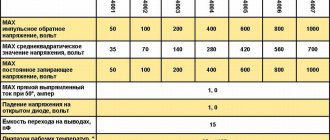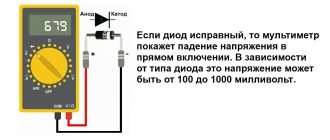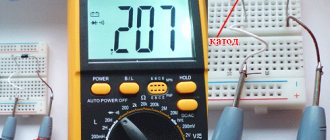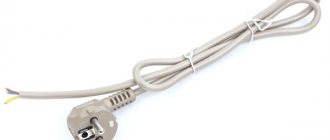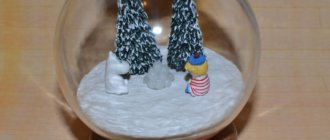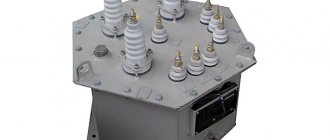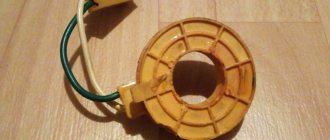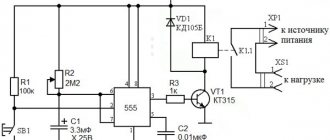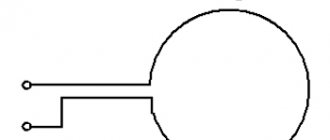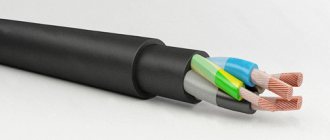1N4007 diodes belong to the 1NXXXX series devices. Such diodes use the American numbering system, since they are semiconductor devices. In addition, this standard is accepted throughout our modern world.
In model 1n4007, the markings read as follows. In the name of the 1N4007 diode, the first part "1N" is a unijunction semiconductor, where the number indicates that it has 1 junction, and the N indicates that it is a semiconductor diode. The remaining numbers are the numbering values of a particular diode.
According to its technical characteristics, such a diode can be compatible with any rectifier diode. All diodes that will belong to the 1N400X series are easily replaceable with just this version of diodes. The main application of such diodes is in embedded system projects.
1N4007 is a rectifier diode with a PN adapter. The ability of a diode to transmit electric current in only one direction with the ability to convert alternating current to direct current. As mentioned above, if we talk about the technical component, it can be replaced without problems or can replace other rectifier diodes related to the 1N400X series.
Currently, they can be used in any area of human activity, for example, flyback diodes, rectifiers used for general purposes as a constant power source, inverters or converters. And this is only a small part of all applications of this type of diodes.
Pinout 1N4007
The 1N4007 diode has only two contacts, which are the anode and cathode, respectively. Both current terminals are provided with opposite charges of different values, which have the names and corresponding charges indicated in the table below.
| Pinout | ||
| Charge No. | Charge name | Charge |
| 1 | Anode | +ve |
| 2 | Cathode | -ve |
How to connect a 1n4007 diode?
In order to carry out installation, you must use a special output circuit when using any position of the part. The soldering process occurs with low-temperature solder, where the melting point should be less than 210 degrees Celsius. In addition, the process itself should last about 10 seconds, otherwise the element will overheat.
It is worth considering that the datasheet 1n4007 indicates a maximum permissible temperature of about 260 degrees, but in practice you can understand that you should not take risks and achieve exactly this temperature. It is better to reduce the temperature than to spoil the part and then waste time soldering it back.
The technique used for its installation is surface mounting, which is used specifically for such a circuit. When soldering, you must use a special solder paste.
Features of application
Model 1N-4007 refers to rectifier devices. The maximum operating voltage of 1 kV makes it easy to use it in a 220 volt household network. These two factors determine its use. The 4007 is used as part of input diode bridges for devices with power below a couple of hundred watts. As a rule, these are cheap light bulbs, chargers and other small electronics.
Elements from the 1N400X line have proven themselves to be a reliable radio amateur companion. Even professionals do not disdain them. This is explained by their price and prevalence in modern technology, as well as impressive electrical characteristics.
Specifications
As you can imagine, 1N4007 is one of the most popular diodes used today. It is used in many chargers for modern phone devices, even those that cost about a dollar and do not have stabilizers or filters to reduce interference. Devices cannot do without 1N4007.
There are exactly four of them in one adapter, on which a diode bridge is assembled using 1n4007, which, in fact, converts alternating current into direct current, transferring the current through itself in only one direction, completely cutting off one of the existing polarities of the entire voltage.
Diode sizes
At the same time, in cheap similar chargers, some manufacturers save these diodes by using 1 instead of 4, replacing them with half-wave rectification. It is strongly recommended to use the first option, with a total voltage of more than 1 Watt. (How to find out how many watts? Use a wattmeter.)
Normal diodes are not able to resist a reverse current avalanche, since they are made specifically to withstand the flow of energy flowing through this element. The cathode output is indicated on the body part with a special ring.
Below you can see the electrical and thermal characteristics of the 1n4007.
Electrical characteristics
The electrical characteristics include parameters such as forward voltage, as well as reverse current, total capacitance, maximum reverse current with a certain load, as well as the average value of the rectifying current and peak repeating reverse voltage.
- Forward voltage (VF) at 1.0A - 1.1 V.
- Reverse current at 25°C - 5 μA.
- The total capacitance at 1.0 MHz is 15 pF.
- Maximum full load reverse current at 75 °C is 30 μA.
- The average rectified forward current (IF (AV)) is 1A.
- Peak repetitive reverse voltage 1n4007 1a 1000v.
The diode has a high overload capacity, as well as a low voltage drop, which can have a peak value of up to 1.1 V. The maximum pulse current has a duration of 8.2 seconds, reaching a voltage of 30A.
As already indicated above, the typical electrical capacitance of the junction should not exceed about 15 pF. This is all taken into account when using a frequency of 1 MHz, and a constant voltage of 4V. Speaking in theory, the speed of the diode is unacceptable, so they are not in demand for high-frequency purposes, since this is not regulated.
The leakage current will not exceed 5 μA, but if a progressive increase in the ambient temperature is noticed, this figure will also increase. For example, at temperatures above 75 degrees, you can be sure that it will increase to 50 µA. As a result, performance indicators deteriorate, which is why for effective use you must use a standard 30% margin of the parameters. In addition, cooling should be properly organized, which is carried out using a non-conducting thermal compound.
The operating frequency of power using high alternating voltage is 60Hz. To get acquainted with the operating limits, you should look at the datasheet, where various operating features are indicated.
Thermal characteristics of 1N4007
Thermal characteristics include power dissipation as well as resistivity as the main ones. Both the above characteristics have the following meanings as given below.
- Thermal resistance - 50 °C/W.
- Power dissipation - 3 W.
Description and application of 1N-4007
Externally, 1N-4007 is a small black cylinder. It consists of a polymer resin used in the manufacture of most such elements. A semiconductor crystal is hidden inside. Its basis is monocrystalline silicon, obtained from sand through extremely high-tech technical processes.
There are two electrical terminals on the sides of the diode. Their task is to conduct current from the crystal to the board into which this part is soldered. The leads are made of copper and covered with a thin layer of solder, i.e. they're cheating.
Additional Information. Diodes are designed to pass electric current in one direction, i.e. from anode (+) to cathode (-). Their hydraulic analogue is a valve. This property is inherent in this part at the level of the silicon crystal lattice from which it is produced. There are also diodes based on germanium, but at the moment they are practically not used.
Datasheet, datasheet.
If you are looking for a Datasheet, a datasheet for this type of diode, then you need to go to the manufacturer’s website to find 1n4007 specifications in Russian or follow the following link.
In datasheet 1n4007, each user will be able to find the most accurate characteristics, as well as specifications and graphs that can reflect the full performance of the microcircuit.
In addition to all this, it also describes some of the typical schemes, as well as uses and other most detailed descriptions, including settings for any popular needs. And also there you can read some applied recommendations on the use of diodes.
How to check 1N4007?
If we talk about checking diodes, then this will not be a particular problem for a knowledgeable person, since the check occurs as in ordinary general-purpose diodes. In order to do this, you should acquire (if you don’t have) special instruments: a multimeter or an ohmmeter.
Step-by-step algorithm for testing 1N4007 diodes
- The first thing to do is turn on the device and switch it to the special “Dialing” mode exactly as indicated in the figure below. If you are using a different model of multimeter, then refer to the operating instructions for your measuring device.
- We take the probes and connect them to the part that you plan to measure. Red should be connected to the anode, and black to the cathode. It is this polarity that is used by the diode through which current will pass so that you can see all the information that will be displayed on the device display. If you have information that indicates too much resistance, you can be sure that an internal open has occurred.
- Now you should change the polarity, and evaluate the value shown on the device display. After changing the polarity, the diode is not able to pass voltage through itself, so it must be infinitely large. If the readings are completely different, then this indicates only one thing - a breakdown in the transition.
This will be quite enough for you to verify the functionality of the semiconductors of a given diode of this series.
Diode marking in4007
Let's start with the breakdown for parts in the DO-41 case. Variants of symbols applied to it are shown in the figure.
Significant Labeling Elements
Explanation:
- Model name series 1N4001-4007.
- Graphic or alphabetic or alphanumeric code of the manufacturer of the radio component.
- Production date in month/year format (last two digits are given).
Since the SMD case is small in size, if you put the full model name on it, it will be difficult to recognize the inscription with the naked eye. Therefore, the name is encoded in accordance with the table.
Marking table for 1N400x series SMD diodes.
| M1 | M2 | M3 | M4 | M5 | M6 | M7 |
| 1N4001 | !N4002 | 1N4003 | 1N4004 | 1N4005 | 1N4006 | 1N4007 |
Alternative 1N4007
It happens that you don’t have a specific diode at hand to replace it in case of a breakdown, that’s when analogs that are available from both domestic and foreign manufacturers can come to the rescue. Below you can find out how to replace 1n4007.
Domestic analogues
One of the most attractive options for replacing such a diode will be models from the KD 258D series, which have incredible characteristics, and some have exactly the same indicators. And some of the parameters exceed those of the diode model 1N4007.
Sometimes other diodes that have partially lower parameters are used as a replacement: D226, KD208-209, KD243 and KD105. Before installing them, you should find out whether this diode option is compatible for your device, and also compare the main characteristics.
Foreign analogues
If you look at foreign models, then there are also full-fledged replacement options. For the most correct example, we present you with several options similar to the 1N4007 model.
- HEPR0056RT diode, which is produced by Motorola.
- Thompson is considered among the best companies, which have two easily replaceable brands of diodes: BYW27-1000, as well as BY156.
- Philips offers BYW43.
- Three incredibly similar components (10D4, 1N2070, 1N3549) developed by Diotek.
It is precisely these analogues from abroad that you can use to adequately replace this type of diode.
Analogs
For 1N4007 (in4007) it is quite difficult to find an analogue. Due to its low cost and availability, it has driven almost all of its competitors out of the market. In any radio store, its price from different manufacturers does not exceed 5-6 rubles. At the same time, more advanced ones can be recommended as a replacement: EM513, EM518. It is also worth paying attention to diodes of the same series with similar parameters, but with a lower operating voltage: 1N4006, 1N4005.
The Russian one produces domestic analogues: KD243ZH, KD258D (KD-29A). They certainly do not meet lead-free standards, but the characteristics are very similar. It is worth noting that KD258D has a relatively high cost, so the feasibility of using it as an alternative is very doubtful.
